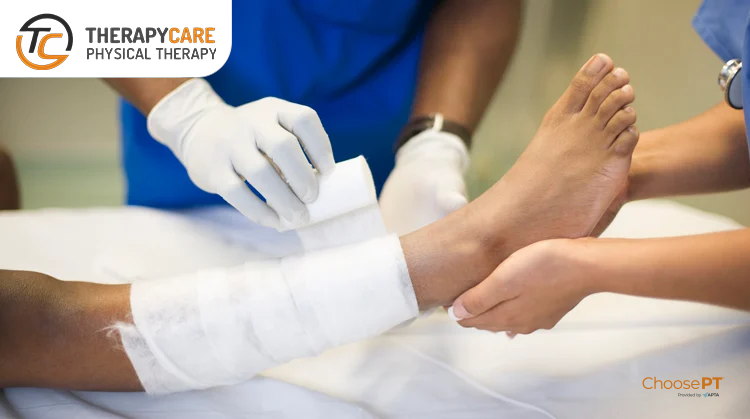
Wounds result from a number of different causes. A physical therapist can assist with any type of wound. It is important to note that anytime you have a break in the skin, there is a potential for infection. You should seek treatment for any wound sooner rather than later.
There are four main categories of wounds:
Some wounds can be quite painful and are easy to identify. Other types of wounds may not hurt at all. It is important for people with diabetes and older adults, or anyone who does not move much, to conduct regular close visual skin inspections. These can be done by themselves or others to determine if a wound is present.
During inspection, you or your caregiver should look for:
If you have any of these symptoms, seek help. These are all signs that should be explored further by a physical therapist or other health care provider.
A physical therapist will conduct a full evaluation, including measuring the wound area and inspecting the surrounding skin. Range of motion, mobility, and strength also will be assessed, as these can contribute to the wound problem, and may assist in the healing process. Your physical therapist also may perform specific testing related to circulation and sensation; you may need additional testing from a doctor as well.
Physical therapists are skilled in managing all types of wounds. Based on the results of your physical therapist’s evaluation, including a review of your medical history and an examination of the wound, they will design a treatment program to meet your needs and goals. Your treatment may include:
Your physical therapist also may work with other health care providers to ensure the safest and most effective healing process possible. Your physical therapist can:
Train family and caregivers. Many wounds can benefit from specific inspection techniques and adjusting body position. When people are unable to safely perform these tasks on their own, family or caregivers may be trained to help with these activities. Physical therapists are experts in positioning people on different surfaces, including beds, wheelchairs, toilets, bedside toilets, or other types of chairs and furniture. They also are skilled in making transfers (moving a person from one surface to another). Your physical therapist can train family members and caregivers to safely perform positioning and transfers, and also teach them skin and wound inspection techniques.
Improve strength and movement. In many cases, wounds are made worse by weakness and/or decreased ability to move. Your physical therapist will develop an exercise program so that the person with a wound can move around their environment as safely as possible without harm. In some cases, exercising and being active will help speed the healing process.
Care for wounds. Physical therapists are trained in wound care and know how to remove dead tissue from a wound (debridement). In extreme cases, debridement may require general anesthesia and be performed by a surgeon.
Wounds require proper dressings to aid healing. Dressings include a suitable material to cover wounds and to fill deeper wounds. Other treatments also may be needed.
These can include:
Your physical therapist will evaluate your wound with each visit and determine the type of dressing and/or treatment to use and how often it should be done. In some cases, your physical therapist will train your caregivers in how to clean wounds and change dressings. As a wound heals, the treatment will likely change.
Your physical therapist will discuss with you:
Improve sitting/lying surfaces and footwear. The surface on which a person lies, sits, or walks may contribute to wounds. Your physical therapist will examine the types of surfaces you use and, if needed, make recommendations for something different. There are special materials that can be used to reduce or remove the amount of weight or pressure for a person who is sitting, lying down, or standing.
Communicate with other health care providers. Several health care providers may be involved in the care of a person with a wound. Your physical therapist will communicate and coordinate care with doctors, nurses, dietitians, and others, as needed. This teamwork will help ensure safe and effective healing, and help prevent new skin breakdown.
Engaging in the right type of activity and/or exercise can help prevent many wounds. Physical therapists are movement experts and can design the right exercise program based on a person’s current wounds and/or risk factors. In addition, exercise and physical activity can help to address many underlying conditions related to wounds, such as:
All physical therapists are prepared through education and experience to treat patients who have wounds. You may want to consider:
You can find physical therapists who have these and other credentials by using Find a PT, the online tool built by the American Physical Therapy Association to help you search for physical therapists with specific clinical expertise in your geographic area.
General tips when you’re looking for a physical therapist (or any other health care provider):
We understand what you’re going through. And we’ll do whatever it takes to get you back in action. We offer flexible hours and in most cases, we can see you within 24 hours.